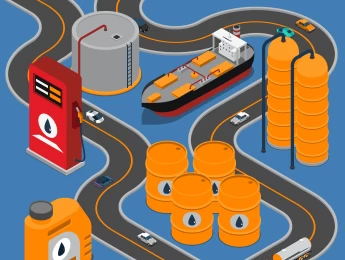Regardless of the type of organisation or industry, health and safety must always be a priority. Maintaining health and safety is crucial to the welfare of all working within an organisation. It encompasses identifying risks, implementing preventative measures, and producing health and safety procedures when risks occur.
Ensuring all health and safety procedures are entirely effective, easily understandable and compliant with legal health and safety regulations is vital. Writing procedures is intertwined with risk management, as information gathered to conduct risk management will be incredibly beneficial when creating health and safety procedures. To establish effective procedures, first, there must be a full evaluation of the probable risks, existing preventative measures, and the potential consequences if they occur.
Many factors need to be considered regarding the physical writing process. There must be a strong focus on ensuring the procedures are coherent and easily understandable by all required individuals. Readability is also heavily influenced by the formatting of the procedures and the exact style in which they are written.
Upon completion of this course, participants will be able to:
- Understand the vitality of writing clear and coherent health and safety procedures within an organisation.
- Examine what information is essential to include within health and safety procedures.
- Identify all health and safety risks organisation-wide and consider all appropriate procedures.
- Evaluate the type of language necessary for health and safety procedures.
- Review existing procedures and recognise areas for improvement.
- Utilise various methods and techniques when writing the procedures to ensure all information is coherent and effective.
- Ensure the procedures can be easily understood by all necessary personnel.
This course is designed for anyone responsible for managing health and safety within an organisation. It would be most beneficial for:
- Risk Managers
- Risk Analysts
- Operations Managers
- Compliance Consultants
- Model Risk Specialists
- Risk and Compliance Investigators
- Chief Risk Officers (CROs)
This course uses a variety of adult learning styles to aid full understanding and comprehension. Participants will review real-world examples of health and safety procedures to highlight key information and the formatting and language contributing to its effectiveness.
The participants will be provided with all the necessary tools and equipment and participate in various presentations, discussions, and individual and group activities. This combination of learning methods will guarantee that the participants can develop a full and in-depth understanding of the taught content and related skills.
Day 5 of each course is reserved for a Q&A session, which may occur off-site. For 10-day courses, this also applies to day 10
Section 1: Fundamentals of Health and Safety Procedures
- Explaining the purpose of health and safety procedures.
- Understanding the consequences of poor health and safety procedures.
- Exploring what information is necessary to include when creating health and safety procedures.
- Identifying the audience of the procedures and ensuring it can be well received.
- Reviewing the health and safety regulations of the local and regional area to guarantee full compliance.
Section 2: Identifying the Necessity of Health and Safety
- Assessing how effective health and safety procedures can reduce potential harm in situations of risk.
- Analysing human behaviour and how carelessness, lack of capabilities and ignorance can lead to violations.
- Methods to successfully conduct risk assessments and hazard identification.
- Incorporating risk assessment results, regional health and safety regulations and procedures into risk management.
Section 3: Developing Health and Safety Procedures
- Utilise information gathered through risk assessments to prioritise risks from greatest potential harm to least potential harm.
- Categorising risks and addressing each type individually.
- Researching existing health and safety procedures to understand potential preventive measures and contingencies.
- Evaluating the organisation’s resources and identifying ideal risk procedures.
- Carrying out internal reviews of existing procedures and testing effectiveness.
Section 4: Writing Health and Safety Procedures
- Focusing on conveying the message clearly and concisely ensures understanding from everyone.
- Balancing concise language with crucial details and explanations.
- Exploring ideal formats and writing styles.
- Reviewing various writing techniques and their advantages and disadvantages.
- Producing the procedures in different formats to ensure full accessibility.
Section 5: Implementing Health and Safety Procedures
- Thoroughly testing the practicality of the health and safety procedures.
- Engaging with varying individuals to learn their opinions and positively respond to constructive feedback.
- Methods of monitoring performance while avoiding risks.
- Regularly revisit and refine the procedures depending on organisational changes.
Upon successful completion of this training course, delegates will be awarded a Holistique Training Certificate of Completion. For those who attend and complete the online training course, a Holistique Training e-Certificate will be provided.
Holistique Training Certificates are accredited by the British Assessment Council (BAC) and The CPD Certification Service (CPD), and are certified under ISO 9001, ISO 21001, and ISO 29993 standards.
CPD credits for this course are granted by our Certificates and will be reflected on the Holistique Training Certificate of Completion. In accordance with the standards of The CPD Certification Service, one CPD credit is awarded per hour of course attendance. A maximum of 50 CPD credits can be claimed for any single course we currently offer.
- Course Code PO2-115
- Course Format Classroom, Online,
- Duration 5 days










